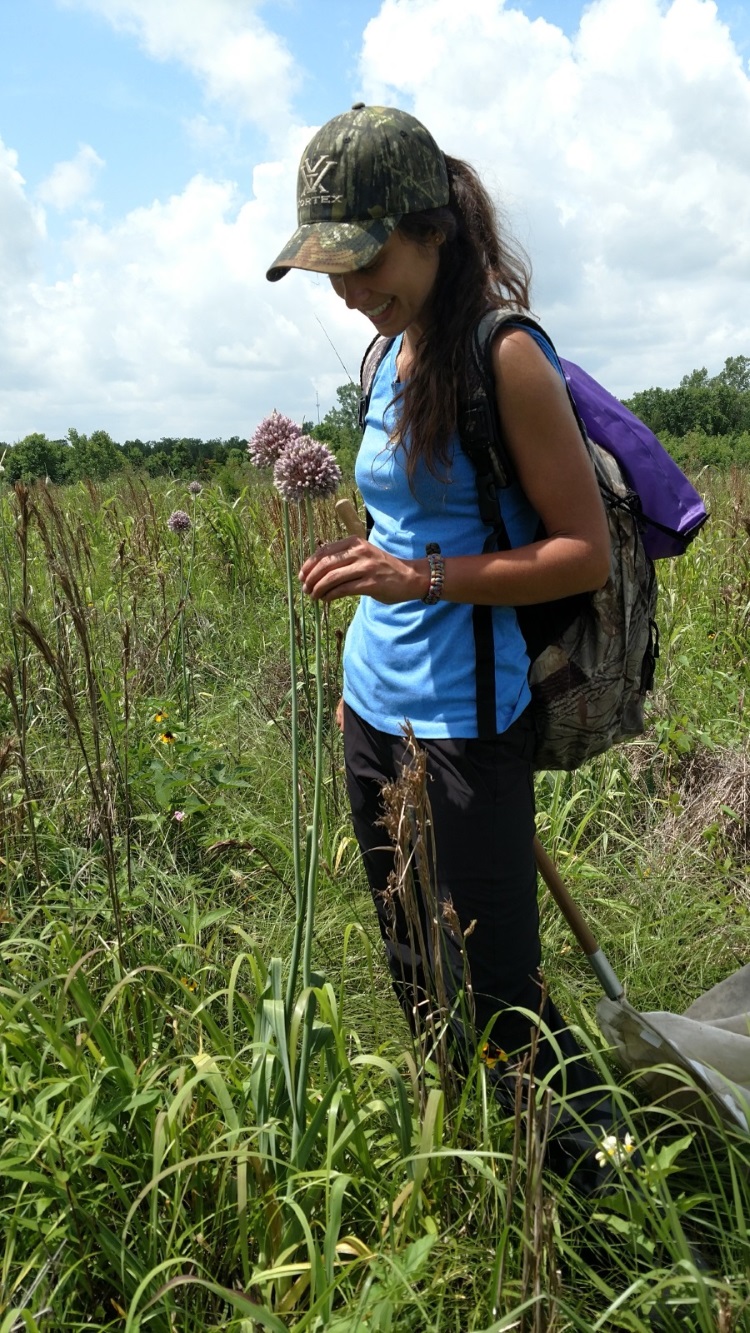
M.S. graduate student in Forestry, Mercedes Siegle-Gaither
M.S. Forestry
When a raindrop falls into a forest, where does it go? This is one of the questions Dr. Courtney Siegert and graduate student Mercedes Siegle-Gaither addressed in their recent research using isotopes to track water pathways through forests. In particular, they examined how different species retained water on and within tree surfaces such as leaves and bark.
“This research is important for understanding how species composition impacts the way water flows through a forest. It’s of particular importance for water scarce areas, especially as regions like California see periods of greater and greater drought,” Siegert said. “Trees are essentially storage compartments of water.”
Siegert and Siegle-Gaither used stable isotopes because their changing composition in trees indicates to researchers how evaporation of water stored on leaves and bark has taken place. High temperatures and low humidity can cause high rates of evaporation, leaving heavier isotopes behind.
In order to conduct her research, Siegle-Gaither had to wait until a storm of at least 12 milliliters had passed through.
“Then I’d hurry out to my study site and collect water samples in 20 milliliter vials from six different tree species,” Siegle-Gaither explained.
In terms of how species altered the isotope composition, differences were small.
“The variations are very small between species. However, we did find a correlation between bark thickness and water retention. Trees with thicker bark hold more water than trees with thinner bark,” Siegle-Gaither said.
Siegert and Siegle-Gaither are still exploring exactly how species impacts water flow.
“We’re trying to figure out why different bark types impact water retention. We suspect it could be something as simple as the way the bark funnels water down to the roots,” Siegert said.
They also categorized the storm types, to see whether storm origin had any effect on water isotopes.
Siegle-Gaither describes how localized thunderstorms have rainfall with much heavier isotopes than storms that originate from the coast or from the middle of the U.S. Differences in the rainfall isotopes further complicate the interpretation of stemflow isotopes, but Siegle-Gaither is working to untangle that mystery.
While the exact mechanism of canopy water transport remains unknown, Siegert and Siegle-Gaither have amassed a huge amount of data that may help contribute to solving it.
“This was a very ambitious project, and we analyzed a lot of data. Now we’d like to determine the physical mechanisms by which water moves. Mercedes did an excellent job working through a difficult project,” Siegert said.
Siegle-Gaither first became interested in water by learning about its occupants: she worked with the U.S. Navy’s Marine Mammal Program to help train sea animals in swimmer defense and object retrieval.
“I had no idea the Navy used seals and dolphins for these kinds of things until I had the opportunity to get involved. It really made me passionate about marine life, and helped me realize the importance of water in a system,” Siegle-Gaither said.
She received her bachelor’s degree in Biology from the University of Wisconsin–La Crosse, and after her stint with the U.S. Navy, came to Mississippi State University to study forestry.
“Mercedes is the hardest working and most dedicated graduate student I’ve had,” Siegert said in praise of her. “She’s always asking questions, she’s active in the lab, and she still found time to help mentor other graduate and undergraduate students and act as president of the MSU Graduate Student Association during the 2016-2017 school year.”
When Siegle-Gaither isn’t studying the flow of water through forests or helping others in the department, she works on developing her own non-profit alongside another MSU doctoral student, Jordan McMahon: ConserVANtion. Through ConserVANtion, which takes place in a van, she hopes to inspire people to get outside and foster awareness for conservation and sustainability.
Article and photo submitted by: Karen Brasher, Marketing Coordinator, Agriculture and Natural Resources Marketing.
MSU is Mississippi’s leading university, available online at www.msstate.edu.
MSU graduate studies information is available online at www.grad.msstate.edu.